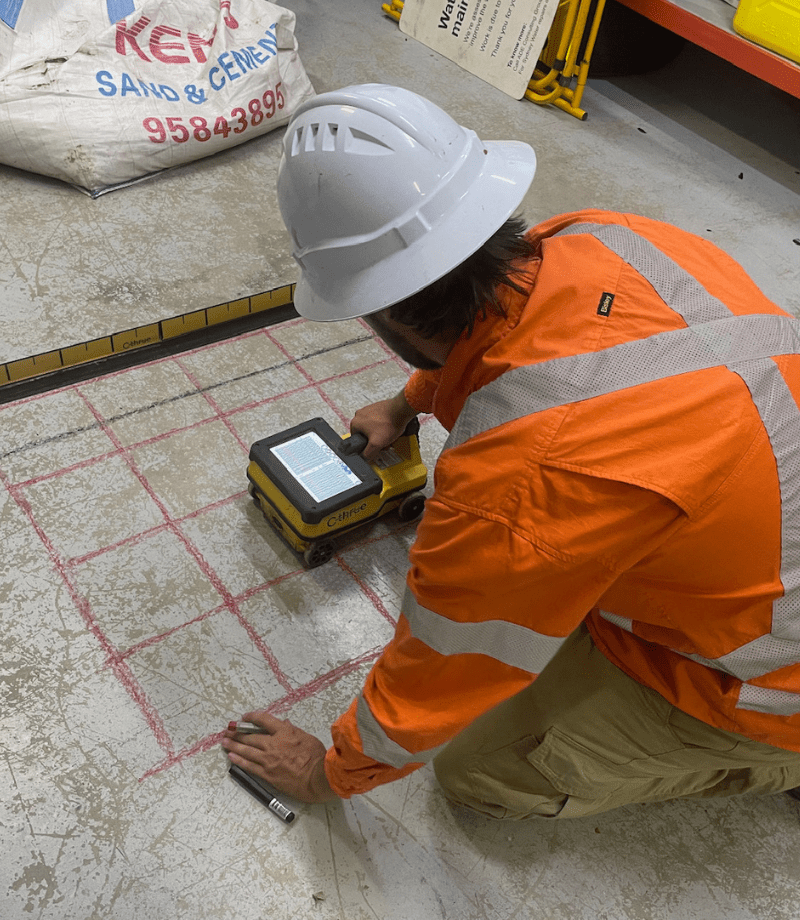Revealing the Power of RainierGPR Concrete Scanning Technology
Revealing the Power of RainierGPR Concrete Scanning Technology
Blog Article
Discovering the Midst: A Comprehensive Guide to Concrete Scanning and Its Diverse Applications
In the world of building and construction and infrastructure growth, the meticulous process of concrete scanning holds a critical function in making sure the architectural stability and safety of tasks. As innovation proceeds to progress, the applications of concrete scanning have broadened much past mere surface-level analyses. From detecting rebar and post-tension cords to drawing up conduits and spaces hidden within concrete frameworks, the capabilities of contemporary scanning techniques are both vital and outstanding. However, the real depth of concrete scanning's possible reaches even additionally, branching right into unanticipated sectors and sparking innovative remedies. The interconnected web of opportunities that concrete scanning presents is not only remarkable however additionally critical for the development of numerous markets.
Importance of Concrete Scanning
Comprehending the relevance of concrete scanning is vital in ensuring the security and integrity of structures throughout construction and improvement tasks. Concrete scanning makes use of sophisticated modern technologies such as ground-penetrating radar (GPR) and electro-magnetic induction to identify ingrained things, gaps, or other anomalies within concrete structures.
Additionally, concrete scanning plays a crucial function in making sure conformity with structure codes and regulations that mandate the security of existing architectural parts throughout building tasks. By accurately mapping out the inner composition of concrete, scanning innovations enable building and construction experts to make enlightened decisions that maintain the architectural stability and sturdiness of structures and framework tasks. In significance, the importance of concrete scanning depends on its ability to guard both the structural integrity and the workers associated with building and construction endeavors.
Technologies Utilized in Concrete Scanning
Concrete scanning depends on innovative modern technologies such as ground-penetrating radar (GPR) and electro-magnetic induction to accurately identify embedded things and anomalies within concrete frameworks. Ground-penetrating radar runs by emitting high-frequency electro-magnetic waves into the concrete. When these waves encounter various materials or voids within the concrete, they get better to the surface area, permitting the GPR system to develop an in-depth subsurface image. This technology is especially reliable in locating rebar, post-tension wires, avenues, and other items embedded in concrete.
Electromagnetic induction, on the various other hand, works by generating electro-magnetic areas around a concrete framework through a transmitter coil. When steel items exist within the concrete, they disrupt these magnetic fields, creating eddy currents to move via the metal. By gauging the modifications in the magnetic fields with a receiver coil, the system can pinpoint the location of metal items in the concrete.
These cutting-edge technologies play an important function in non-destructive screening, making sure the safety and security and integrity of concrete frameworks in various industries.
Applications in Building Market
Within hop over to here the construction sector, concrete scanning modern technology finds diverse applications that improve project performance and safety. In addition, concrete scanning is made use of for finding voids, such as air pockets or areas of degeneration within concrete, which can jeopardize the total toughness of a structure. Concrete scanning plays a critical duty in high quality control by confirming the thickness of concrete covers over reinforcement, making certain compliance with layout specs and requirements.

Security Benefits of Concrete Scanning
In the realm of construction safety and security, the implementation of concrete scanning innovation presents a vital advantage in preemptively recognizing potential dangers and fortifying architectural stability. By utilizing advanced scanning methods such as ground-penetrating radar (GPR) and electro-magnetic induction, building and construction teams can properly situate rebar, post-tension cords, channels, and other surprise things within concrete structures. This aggressive approach substantially reduces the threat of unintended strikes during boring, cutting, or coring tasks, consequently avoiding costly problems, injuries, and job delays.
Moreover, concrete scanning enhances employee security by supplying real-time information regarding the structural problem of concrete components. This data makes it possible you can look here for construction professionals to assess the integrity of existing structures, identify damage or flaws, and make educated choices pertaining to repair work and maintenance treatments. By attending to potential safety concerns immediately, concrete scanning adds to developing a protected workplace and alleviating the likelihood of structural failures or accidents on construction websites. Inevitably, the safety advantages of concrete scanning not just secure possessions and lives but also maintain sector requirements for top quality and reliability.
Future Patterns in Concrete Scanning
Emerging developments in scanning technology are poised to revolutionize the area of concrete evaluation and analysis. By taking advantage of the power of AI, these systems can evaluate vast quantities of information collected during scanning processes to supply more comprehensive and accurate understandings into the condition of concrete structures.
One more substantial trend is the advancement of more straightforward and mobile scanning tools. Miniaturization of scanning tools permits for less complicated accessibility to constrained spaces and remote areas, making evaluations more thorough and reliable. In addition, innovations in wireless communication technologies make it possible for real-time information transfer and analysis, promoting quicker decision-making processes.
Moreover, there is a growing focus on sustainability in concrete scanning innovations - RainierGPR Concrete Scanning. Suppliers are progressively incorporating green materials and energy-efficient functions right into their tools to reduce environmental effect. These future fads are readied to enhance the efficiency, accuracy, and sustainability of concrete scanning practices, forming the sector's future landscape
Verdict
To conclude, concrete scanning plays a critical role in the construction market by making sure the security and efficiency of different check tasks. By using sophisticated modern technologies, such as GPR and radar imaging, specialists are able to properly discover possible hazards within concrete frameworks. The applications of concrete scanning are substantial and remain to develop, making it a crucial device for keeping the stability of buildings and facilities. As innovation advancements, the future of concrete scanning holds promising advancements for improving construction procedures.

Report this page